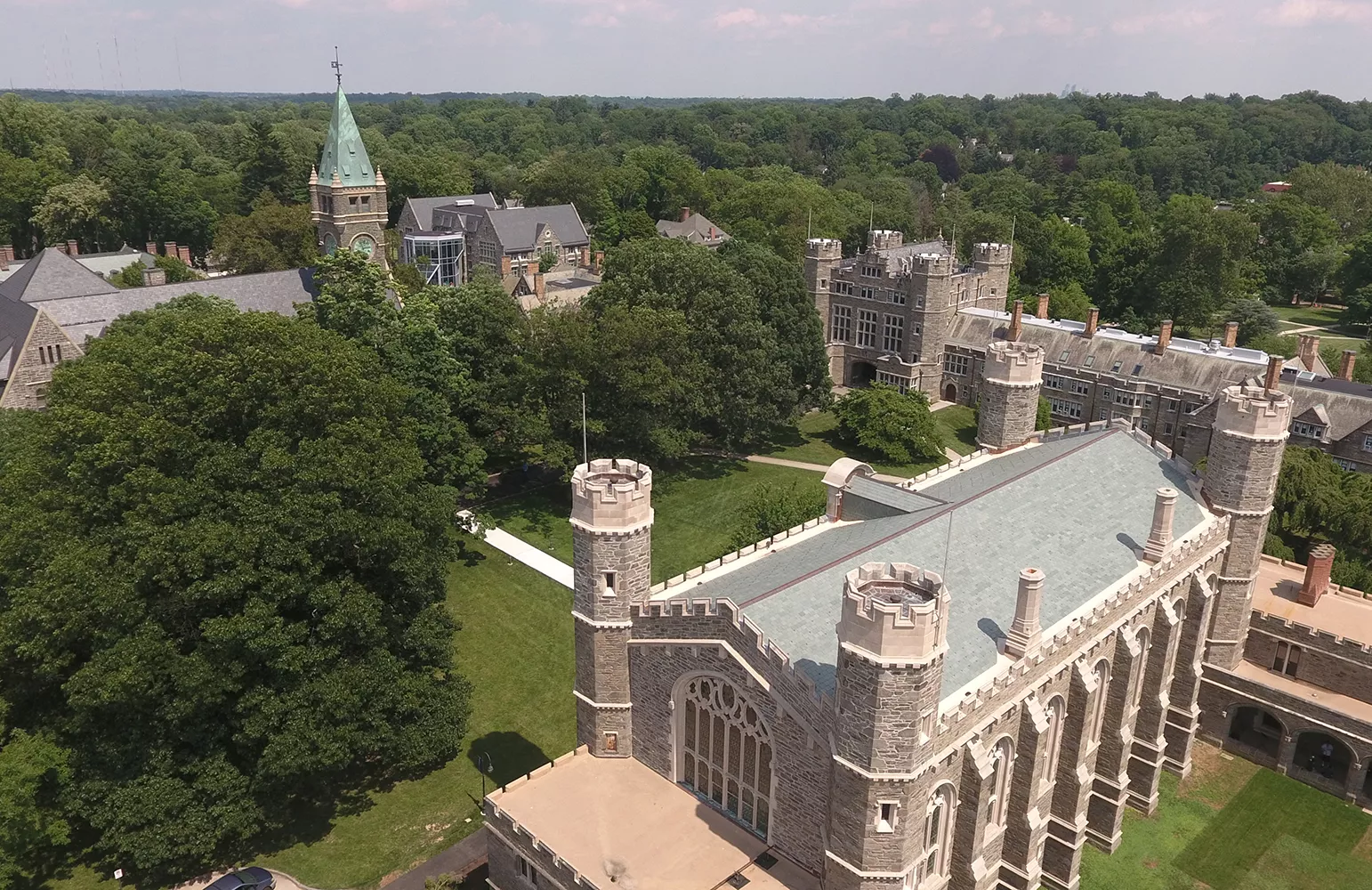
A mix of students, faculty, and staff gathered in Dalton 300 on Wednesday for the last of two community discussions on sustainability and the College’s carbon footprint led by Director of Facilities Services Nina Bisbee and Associate Director Jim McGaffin.
The discussion was opened with brief remarks from Bryn Mawr President Kim Cassidy.
“We’re going to set a goal towards achieving carbon neutrality. The question we’re starting to engage now is exactly how we will do that—and community input is important,” she said in introducing Bisbee and McGaffin.
The hour-long discussion began with an overview of the progress made since the College’s 2010 Climate Action Plan, a goal of which was to reduce the carbon footprint of the College by 10 percent from a 2008 baseline over the span of 10 years.
“Well, here it is 2020 and we’ve had a net reduction of just over 50 percent,” announced McGaffin.
The biggest driver of the reduction has been a much more rapid than anticipated shift to 100 percent wind power for the College’s electricity, but other perhaps less obvious moves have also been significant.
“One of the things we’ve done that not many other schools have is to put a cap on growth,” said McGaffin.
By not spending on a lot of new construction (which is in itself a high-energy use endeavor), the carbon reduction obtained from conservation efforts are not offset by increased usage to support additional space. The College is also able to then use more resources to improve the roofs, windows, doors and HVAC systems of its original buildings to make them more energy efficient.
Other factors that have contributed to the reduction include changes to the College’s vehicle fleet, Dining Services initiatives, and expanded use of LED lighting.
For the rest of the discussion, participants broke up into groups of five or six and took part in two exercises. In the first, they looked at a series of criteria for initiatives to help move the campus toward carbon neutrality and tried to rate what factors they valued most.
The factors included effectiveness, visibility, avoiding unintended consequences, producing additional benefits, and geographical relevance.
For the second exercise, the groups looked at various strategies available, including greater conservation efforts on campus, purchasing of carbon offsets, and other possibilities including on-campus solar projects and moving to the use of electric vehicles. In this exercise, participants were asked to give a preferred weight to each strategy.
Bisbee and McGaffin plan to hold a similar discussion at this year’s Community Day of Learning. The College is hoping to announce a new Carbon Neutrality Commitment during Earth Week in April.
Those who can’t make it to any of the discussions are encouraged to send thoughts and ideas to nbisbee@brynmawr.edu.